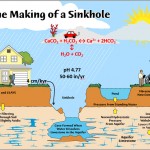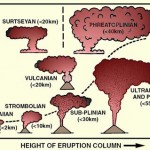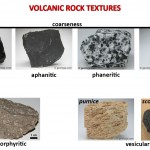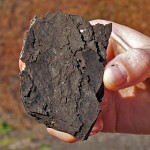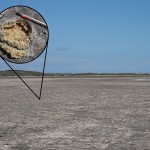The ocean floor forms at seafloor spreading centers, where basaltic magma pushes out through cracks. This magma ultimately comes from the mantle. What would you see if we could punch out a 8 km deep tube from the sea floor? Unfortunately, that isn't yet possible, but thanks to ophiolites, which are parts of the seafloor that have been uplifted to where we can study them, we have an idea of what it would look like.
From the top to bottom, the structure looks like this:
- Crust
- Deep-sea sediments (< 1 km thick): form from accumulation of erosion and organic matter
- Basaltic pillow lavas (< 1 km thick): smooth black "blobs" that form as magma squeezes out from dikes below and quickly cools in seawater
- Sheeted dike complexes (1-1.5 km thick): the sheets form as magma intrudes through a crack, then pushes the rocks apart; this process repeats over and over (click to see diagram)
- Gabbros (2-5 km thick): an intrusive mafic rock (intrusive means the rock cooled beneath the surface, so it cooled more slowly and large visible crystals were able to form; compositionally, it's equivalent to basalt)
- Mantle
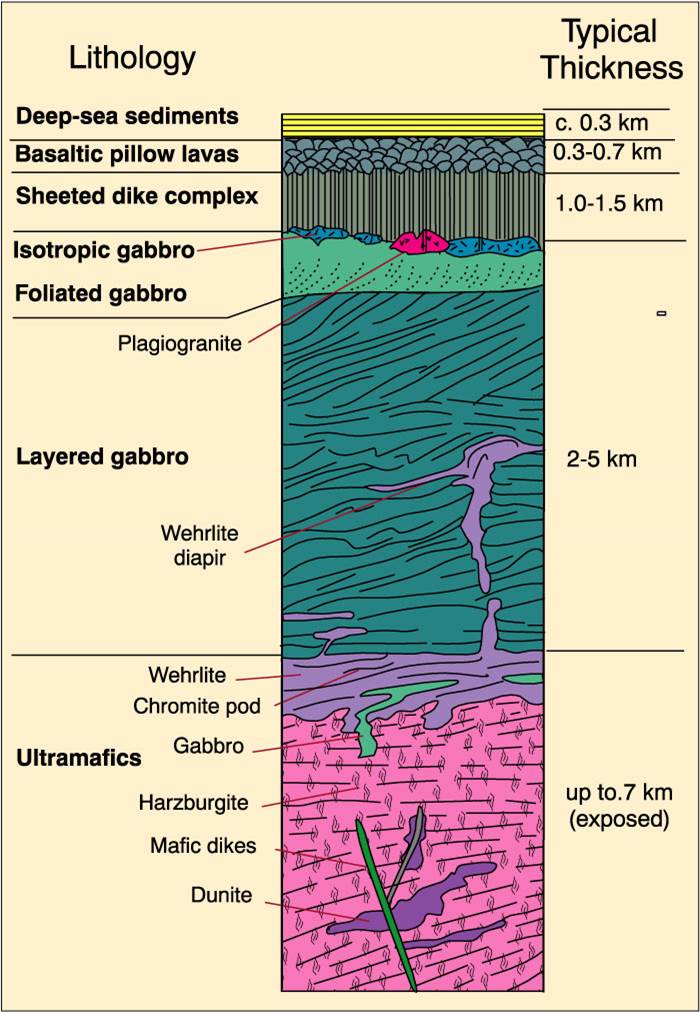 Lithology and thickness of a typical ophiolite sequence, based on the Samial Ophiolite in Oman. After Boudier and Nicolas (1985) Earth Planet. Sci. Lett., 76, 84-92.
Lithology and thickness of a typical ophiolite sequence, based on the Samial Ophiolite in Oman. After Boudier and Nicolas (1985) Earth Planet. Sci. Lett., 76, 84-92.
A few good links:

